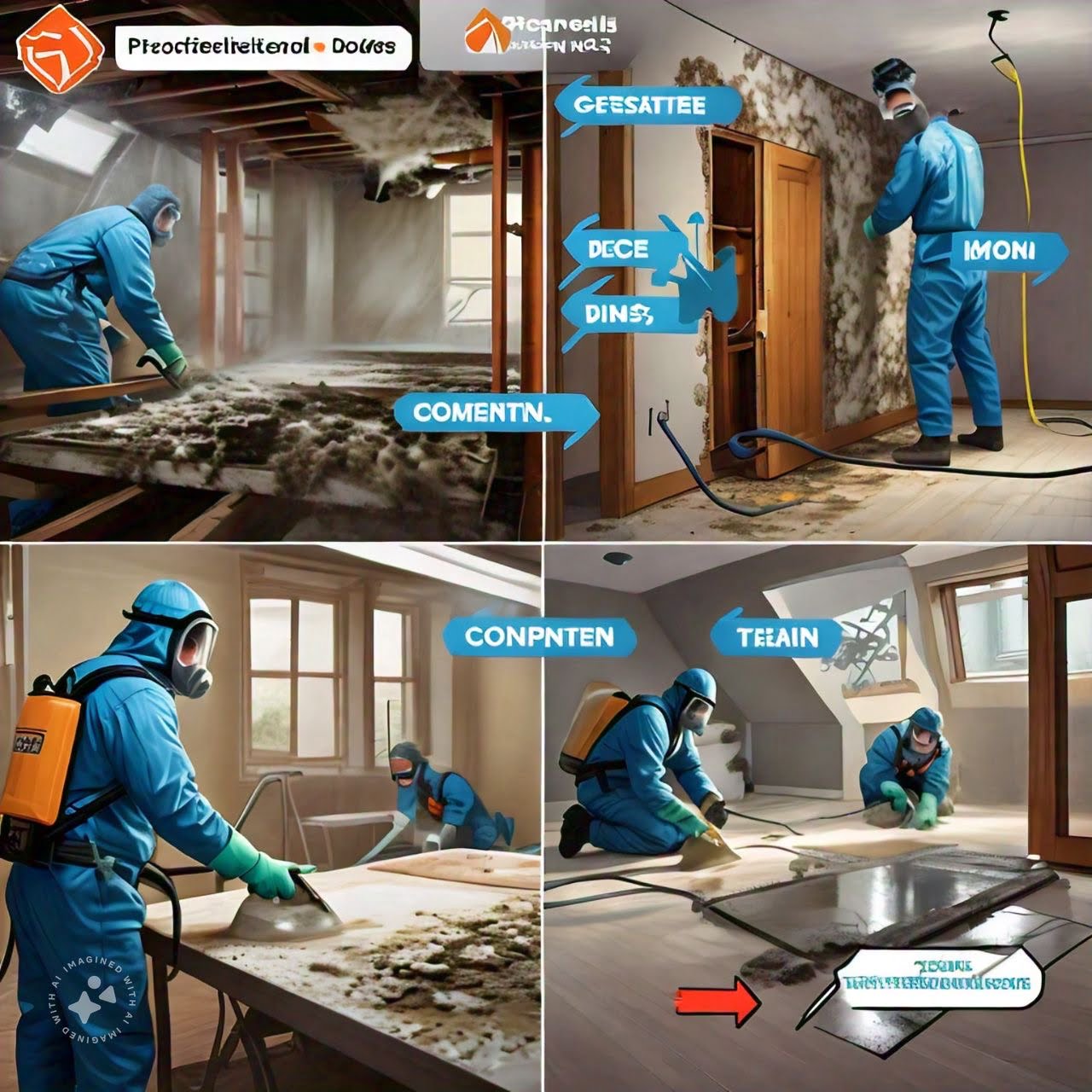Mold remediation is essential to ensure a home’s and its occupants’ safety, particularly when dealing with extensive mold infestations. The question, “How long does mold remediation take?” is one of the most common concerns for property owners facing mold problems. The duration can vary widely depending on several factors, including the severity of the infestation, the size of the affected area, the materials involved, and the professionals carrying out the task. We will explore these factors to clarify the timeline involved in mold remediation in Visalia CA, helping homeowners plan their next steps efficiently and effectively.
Size and Scope of the Mold Infestation
One of the primary factors influencing how long mold remediation will take is the size and scope of the mold infestation. The process may take just a few hours or a day in a small, localized area. For instance, mold growth confined to a bathroom or basement wall may be easily treated and removed. However, if mold has spread throughout multiple rooms or into the structural components of the building, the remediation process will take significantly longer. When mold infiltrates walls, flooring, and ceilings, removing it requires more time, and more specialized equipment and procedures may be necessary. In such cases, remediation can take several days or even weeks to complete. The professionals may need to isolate areas, remove contaminated materials, and decontaminate the environment, which will extend the overall timeline.
Type of Materials Affected
Another critical aspect that can affect the duration of mold remediation is the type of materials the mold has contaminated. Mold thrives on organic materials, so wood, drywall, carpet, and insulation are all highly susceptible to mold damage. Some materials, like concrete and tile, are less porous and easier to clean, which can speed up the remediation process. However, if mold has embedded itself into porous materials like drywall or insulation, those materials often need to be removed and replaced entirely. This can add considerable time to the project. Additionally, areas with significant moisture, such as basements or crawlspaces, may be more challenging to dry out, and effective moisture control is key to ensuring mold does not return. If the professionals must remove and replace damaged materials, the timeline could easily extend into several weeks.
Extent of Water Damage
In many cases, mold infestation is the result of water damage from flooding, leaks, or high humidity levels. The extent of water damage can significantly impact the timeline for mold remediation. The longer water has been present in the home, the more time mold has had to spread, and the more extensive the remediation process will be. Addressing water damage can also be time-consuming, as it requires not only the removal of standing water but also the drying of walls, floors, and other surfaces. Moisture control is a critical part of mold remediation, and if water continues to seep into the property, the remediation process cannot be fully completed. If significant structural drying is required, the remediation may take several additional days, even weeks, to ensure that moisture levels are sufficiently reduced to prevent further mold growth.
Mold Species and Toxicity
The type of mold present can also affect the duration of remediation. There are many different species of mold, and some are more toxic and aggressive than others. Black mold, or *Stachybotrys chartarum*, is notorious for being difficult to remove and dangerous to health, particularly for those with respiratory issues or allergies. The presence of highly toxic molds may require additional safety precautions, specialized treatments, and more thorough cleaning procedures, all of which can add time to the remediation process. Furthermore, if the mold is producing high levels of mycotoxins (harmful substances produced by certain molds), more stringent containment and decontamination methods may be necessary. In these cases, mold remediation may take significantly longer, as it will be crucial to ensure that all mold and toxins have been properly removed to ensure the safety of the home’s inhabitants.
Access to the Affected Areas
Access to the areas affected by mold can also influence the length of time required for remediation. If mold is growing in easily accessible areas, such as on walls or ceilings, the remediation process may proceed quickly. However, if the mold has developed in hard-to-reach places, such as inside walls, under flooring, or in crawl spaces, it can be more difficult to address. Professionals will need to carefully navigate these areas, which may involve removing parts of the building’s structure to access the mold. This process can take additional time, and in some cases, it may involve bringing in additional equipment to safely reach and remove the mold. Limited access to affected areas can slow down the process and extend the overall timeline for mold remediation.
Mold remediation can vary significantly in terms of how long it takes, depending on multiple factors such as the size and scope of the infestation, the types of materials affected, the extent of water damage, and the type of mold involved. In small, localized cases, mold remediation may be completed in just a few hours or days. However, larger, more complex infestations may require several days or weeks to fully address. Homeowners should also account for containment measures, access to affected areas, and post-remediation testing when considering the timeline for mold removal.

















